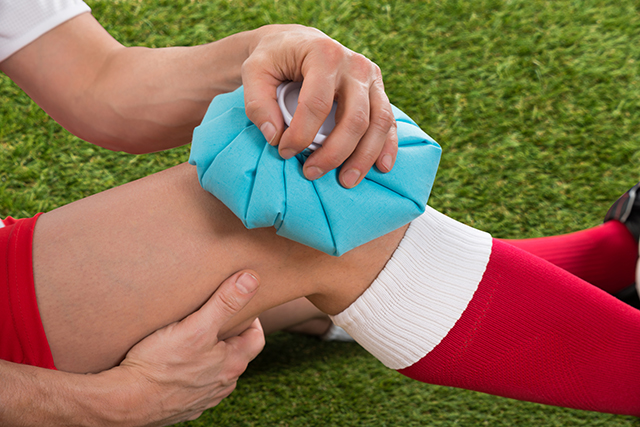It can sometimes be confusing whether to use heat or cold when treating sore muscles or an injury, but keep these facts in mind.
Heat
- Brings more blood to the area where it is applied.
- Reduces joint stiffness and muscle spasm, which makes it useful when muscles are tight.
- Should NOT be used for the first 48 hours following and injury.
Types of warm packs or pads
Warm towel
- Dampen a towel with warm (not scalding) water.
- Apply to the affected area to relieve muscle spasm.
Heating pad
Be sure to protect any type of heating pad device from coming in direct contact with the skin. Precautions should be taken to avoid burns, especially if you have nerve damage, such as from diabetes or other conditions.
When muscles work, chemical byproducts are produced that need to be eliminated. When exercise is very intense, there may not be enough blood flow to eliminate all the chemicals. It is the buildup of chemicals (for example, lactic acid) that cause muscle ache. Because the blood supply helps eliminate these chemicals, use heat to help sore muscles after exercise.
Cold
- Relieves pain by numbing the affected area.
- Reduces swelling and inflammation.
- Reduces bleeding.
Types of cold packs
Ice towel
- Dampen a towel with cold water.
- Fold it and place it in a plastic, sealable bag.
- Place the bag in the freezer for 15 minutes.
- Remove from freezer and place it on the affected area.
Ice pack or cold compress
- Put ice in a plastic, sealable bag.
- Fill partially with water.
- Seal the bag, squeezing the air out of it.
- Wrap the bag in a damp towel and apply to the affected area.
When an injury or inflammation, such as tendonitis or bursitis occurs, tissues are damaged. Cold numbs the affected area, which can reduce pain and tenderness. Cold can also reduce swelling and inflammation.

